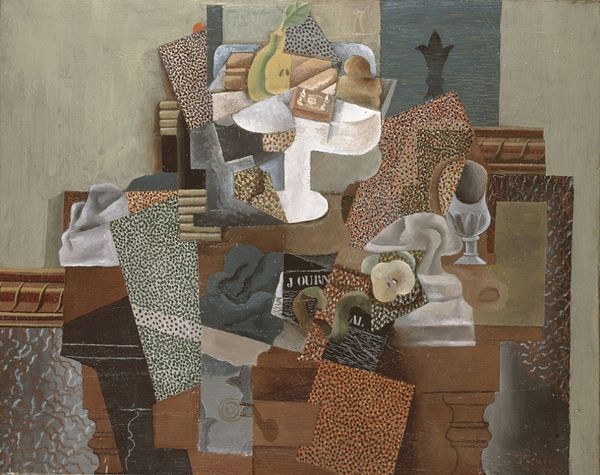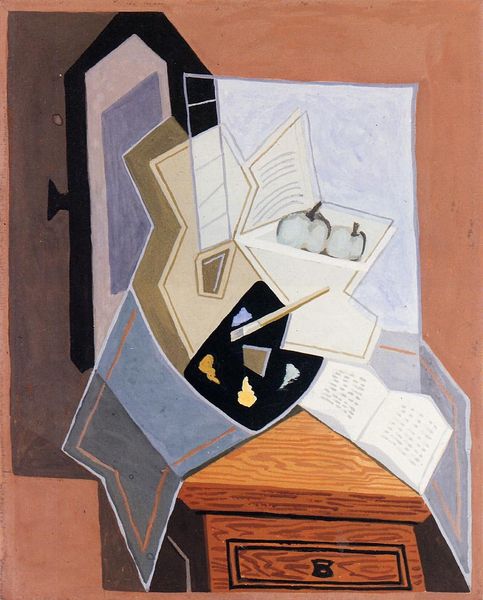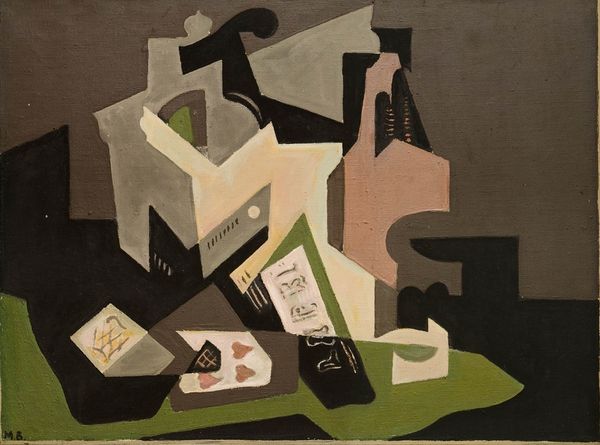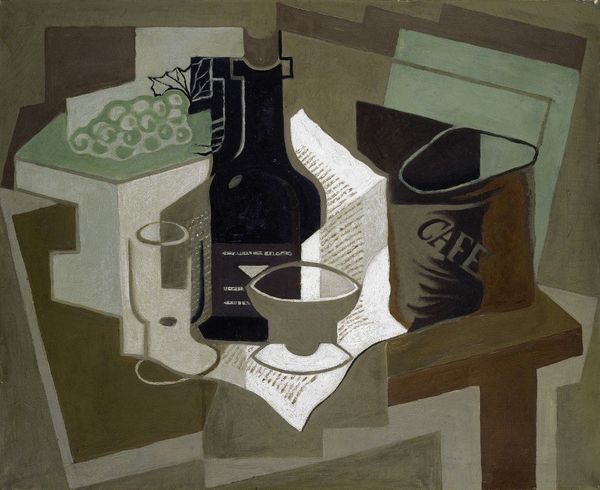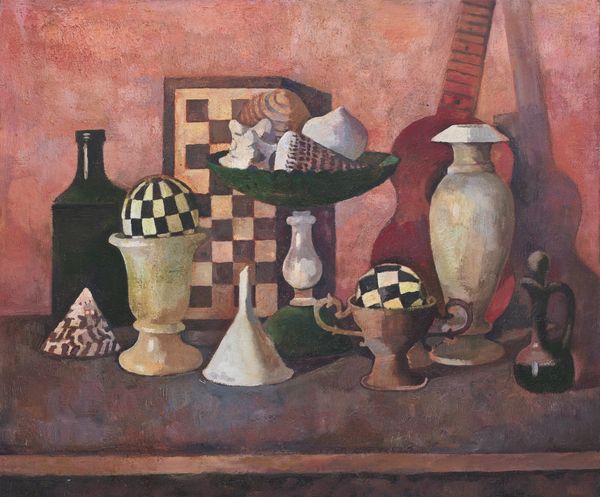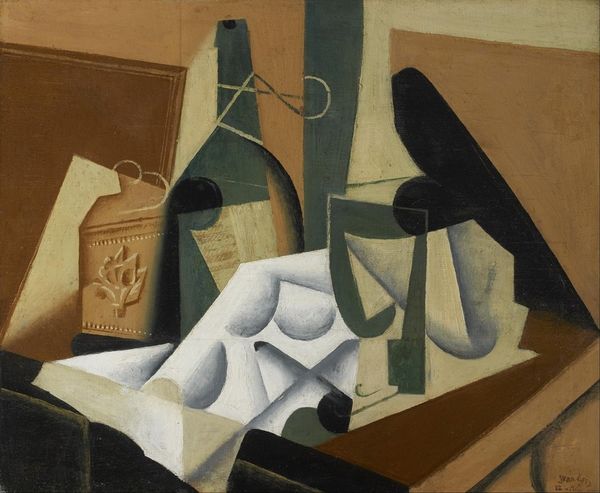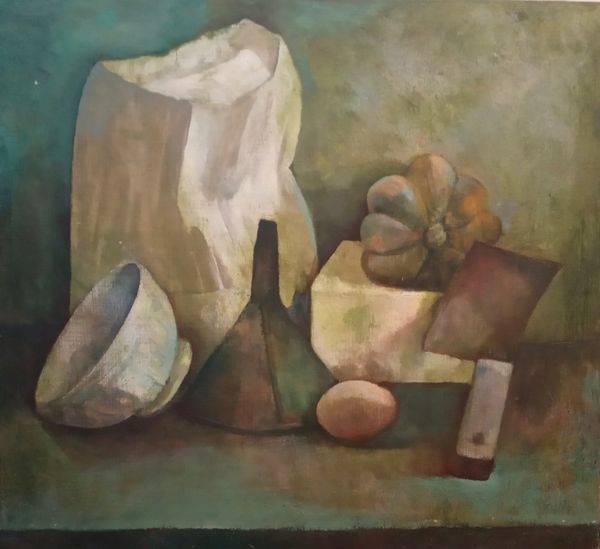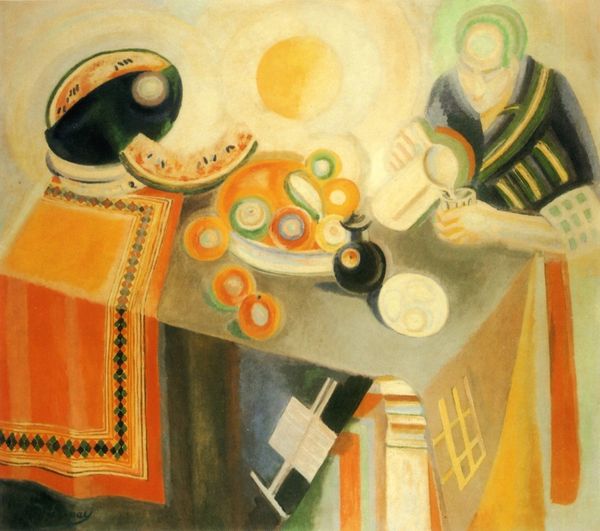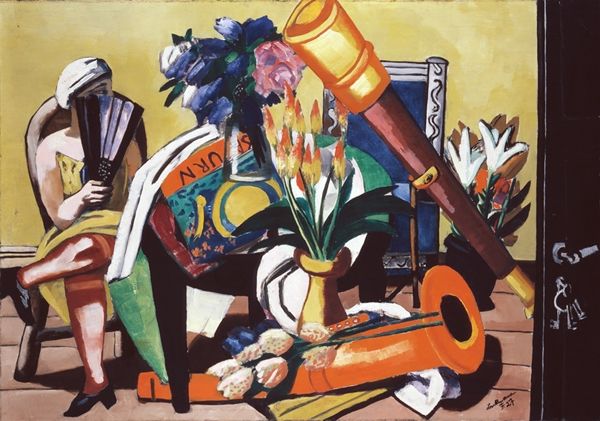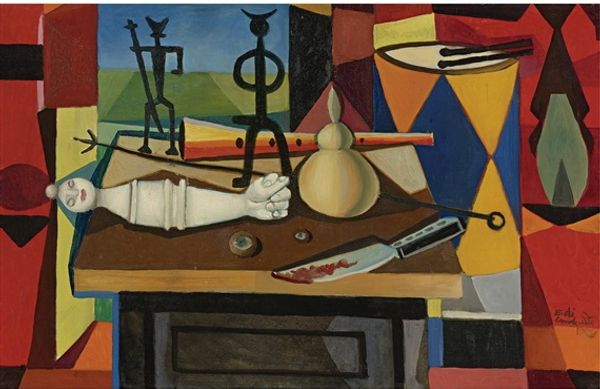
painting, oil-paint
#
cubism
#
painting
#
oil-paint
#
oil painting
#
modernism
Copyright: Nikos Hadjikyriakos-Ghikas,Fair Use
Editor: So this is Nikos Hadjikyriakos-Ghikas's "Still life with playing cards," created in 1946, oil on canvas. It strikes me as such an…intellectual still life. Not just fruit and flowers, but geometry, games, knowledge… What do you make of it? Curator: You've nailed it, there's an intense engagement with intellect here. I see it as a fascinating meditation on postwar Europe, specifically Greece, in '46. It’s post-occupation, the shadows of conflict are everywhere, but there’s also this fervent desire to rebuild, to rediscover meaning. The playing cards suggest chance, risk, games of power - things that were at play during the war and occupation. Editor: I hadn’t thought of that context! The almost hidden math equation on the tiny chalkboard... Is that symbolic, too? Curator: Absolutely! Science, rationality, mathematics—these were seen by many as a way forward, a way to reconstruct a shattered world through reason and order. Ghikas situates these concepts in contrast to, and perhaps intertwined with, chance and the unknown. The deconstructed form owes a debt to Cubism of course, but here it takes on this weight of fractured histories being pieced back together. Do you see any connections with how reconstruction manifests socially and politically? Editor: Yes, that really clicks now. The jumbled still life represents the societal disruption following the war, but, placing these "intellectual" items may hint towards using new concepts for creating a "new" society. I feel a shift in how I perceive this artwork. Thanks so much for sharing these interesting insights. Curator: Indeed. And by inviting viewers to engage with these deeper layers, Ghikas is implicating us in this ongoing process of critical reflection and hopefully reconstruction. It’s about connecting with the past to shape a better future, as artists are uniquely able to facilitate!
Comments
No comments
Be the first to comment and join the conversation on the ultimate creative platform.
